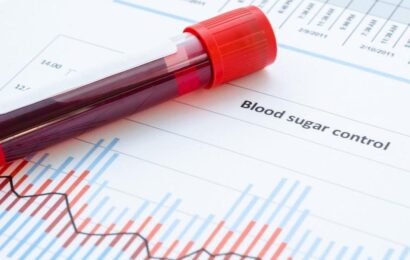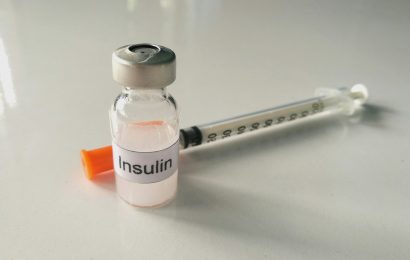Fat is a necessary nutrient, and we need it to sustain health. But it’s also had its share of hard knocks in the past, and many people (including some dietitians) are still leery about promoting its goodness. In light of the new cholesterol management guidelines from the American Heart Association and the American College of Cardiology, as well as the FDA’s recent proposal to ban trans fat, I decided to write about the different types of fat in our diets this week.
I won’t get into either of these stories in much detail, but suffice it to say that cholesterol has been in the news big-time recently. New guidelines are advocating the use of statins for a whole lot more people now. While this isn’t necessarily a bad thing, what seems to have been overlooked is the use of lifestyle management to help with managing cholesterol and reducing heart disease risk. Just like with diabetes management, medication, eating, and exercise all work together to lessen heart risk.
So now is a good time to refresh your memory or revisit what you thought you knew about fat but that may no longer be the case!
Types of fat
Saturated fat. There are two main types of fat in the diet: saturated and unsaturated. Saturated fat has, for many years, been known as the “bad guy.” Back in the 1970’s, a landmark study declared that saturated fat was linked with raising blood cholesterol levels; increased cholesterol, in turn, was linked with raising the risk of heart disease. Recently, however, some studies suggest that decreasing saturated fat intake is NOT linked with a lower risk of heart disease (or stroke, for that matter). Some health experts are now refuting guidelines to lower saturated fat intake. Does this mean that loading up on butter, shortening, red meat, and cheese is now OK? Not exactly. It’s still wise to proceed with caution.
What IS known is that cutting back on saturated fat is still a good idea as long as you replace those “bad” fats with healthful unsaturated fats. Doing so can lower your LDL (“bad”) cholesterol and improve the ratio of total cholesterol to HDL (“good”) cholesterol. On the other hand, eating less butter or bacon, for example, won’t do much good if you’re adding more refined, unhealthy carbs to your diet, like white bread and sugary soft drinks.
The biggest contributors of saturated fat in our diet are pizza and cheese, but other types of dairy products and red meat are high on the list, too. Healthful foods contain saturated fat, too, like chicken and nuts, but obviously, in smaller amounts. The point is not to avoid saturated fat (it’s neither necessary nor possible), but to eat less. How much? The American Heart Association advises that we take in no more than 7% of calories from saturated fat. As an example, if you eat 2,000 calories per day, 7% of calories translates into no more than roughly 16 grams of saturated fat per day. A low-saturated-fat food contains no more than 1 gram per serving. Researchers do know that certain saturated fatty acids seem to be less “harmful” than others, such as the one found in chocolate. Stay tuned.
Trans fat. Trans fats are made by heating liquid vegetable oil in the presence of hydrogen (called hydrogenation). Partially hydrogenating oils lends stability and lengthens shelf life. These trans fats are great for fried foods because they don’t break down when exposed to heat. Trans fat also naturally occur in some foods, such as beef fat and dairy fat, but in small amounts.
Trans fats are thought to be more harmful than saturated fat because they raise LDL and lower HDL cholesterol (kind of like a double whammy). Every 2% of calories from trans fat can raise the risk of heart disease by 23%.
A couple of weeks ago, the FDA announced a plan to ban the use of trans fats in processed foods (fast foods, snack foods, margarine, etc.). Doing so could prevent 20,000 heart attacks and 7,000 deaths from heart disease per year. If this decision goes through, food companies would be mandated to stop adding trans fats to their food products. It could still take a while to get trans fats out of the food supply entirely, but it’s a step in the right direction.
Polyunsaturated fat. The “polys” include omega-3 and omega-6 fatty acids. These are liquid at room temperature. What’s known is that polys can lower LDL cholesterol by 8%. Omega-3 fatty acids, including fish oils, can lower blood triglycerides and raise HDL cholesterol. The goal is to get omega-3s by eating fatty fish (salmon, tuna, mackerel) at least twice a week, and to include plant sources of omega-3s, too, like walnuts and flaxseed. Omega-6 sources include canola, sunflower, and soybean oils. When polyunsaturated and monounsaturated fats are eaten in place of refined carbs, LDL cholesterol can drop. Insulin sensitivity (the body’s ability to use insulin to lower blood glucose) also improves.
Monounsaturated fat. Also liquid at room temperature, the monos include olive, peanut, and canola oils, as well as nuts, olives, and avocados. Monos contain omega-9 fatty acids and in addition to helping lower LDL cholesterol, they can reduce blood pressure and increase insulin sensitivity. When monos replace saturated fat, LDL cholesterol can drop by 6% to 10%. And when monos replace refined carbs, HDL and triglyceride levels improve.
Trying to whittle your middle? Include monos in your diet. In one study, subjects who drank a smoothie containing canola oil every day for four weeks lowered their abdominal fat by 1.6% compared to no reduction in abdominal fat in subjects who drank a smoothie without the monounsaturated fat.
We haven’t heard the last about fat, that’s for sure. Proponents of saturated fat will remain vocal, and hopefully that will spur more research to help us better understand how all types of fat affect our health. While low-fat diets have somewhat fallen out of favor, it’s still probably a good idea to be somewhat prudent of how much we eat — but more importantly, to choose the healthful, unsaturated fats as the main source of fat in our diets.




